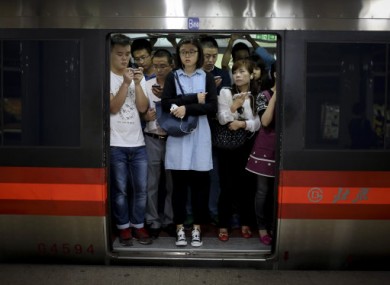 |
The Dalloway - "New York's Fanciest 'Lesbian-Implied'
Bar/Restaurant" |
The Dalloway
Location: 525 Broome Street, New York, New York, USA
Opened: November 2012
Closed: October 2013
Another short-lived lesbian bar in NYC.
Here's some of what the New York Observer (Drew Grant) said in the month after it opened:
The Dalloway. . . is a gorgeous, two-story affair on Broome and Thompson. The downstairs is a mix between a lounge and a club, where every Thursday night one can find the “Girls Party” downstairs, where gyrating models and bookish butches dance with abandon. The night the Transom attended, Samantha Ronson was DJing, and the area around her raised booth served as the dance floor.
But it’s the upstairs that makes The Dalloway unique. It’s a restaurant with freestanding antlers on all the tables and the kind of hipster-meets-high-end vibe that makes it difficult to place on the Kinsey Scale. (OpenTable.com resorts to the tortured locution “lesbian implied.”)
"Lesbian implied"??? Hadn't heard this term before, but it isn't sounding good. A brand new way to explain why you're just sorta kinda committed to what is supposedly your core clientele?
The Dalloway also got a nod from AfterEllen:
 |
| Dalloway exterior |
When I heard The Dalloway, a new lesbian-leaning restaurant and bar, was opening my reaction was far from enthused, but then I checked it out and I have to say I may have found the antidote to my fear of socializing.
If you’re a regular AfterEllen reader you’ll be familiar with the owners, Kim Stolz and Amanda Leigh Dunn. Kim was on Top Model a long time ago and Amanda was featured on the most recent season of The Real L Word. They met years ago through mutual friends, both felt that NYC was lacking a great hangout spot and decided to go for it.
I’m glad they did because The Dalloway is a really nice place. The kind of place you could take your mom to for dinner and then stay to binge-drink as soon as she leaves because your mom did that passive aggressive thing she does that makes you hate yourself for being gay.
At first I worried the place would be too cool for me. I mean, it’s in Soho, a neighborhood that houses designer flagship stores and spoilt teens that study instillation art at NYU. But due to my girlfriend’s insistence and my secret hope that Whitney from The Real L Word would come busting in with those huge chunky dreds and start a bar fight, I decided to check it out. Upstairs is a restaurant; all the tables were booked for the next hour, so my girlfriend and I sat in the downstairs lounge by the fireplace and enjoyed dinner while the bar slowly filled up. By the time we left at 10 the place had transformed from small gatherings of friends and the occasional stone butch blues kind of couple to a bumping dance party — and a diverse one at that: lots of cute young ladies, but also a smattering of hot dudes and some older folk.
"Lesbian leaning"?
We even scored a write-up from the veritable New York Times (by a dude again):
LESBIANS tired of the same old bars in Manhattan — Cubbyhole, Henrietta Hudson, the Stonewall Inn — have a new spot to call their own. Opened in November, the Dalloway, named after the Virginia Woolf character, is owned by two reality TV stars: Kim Stolz of “America’s Next Top Model,” and Amanda Leigh Dunn of “The Real L Word.”
Thursday, the official girls night, has already become a popular gathering on the downtown lesbian circuit. On a recent visit, the basement bar was wall-to-wall with stylish ladies in form-fitting fashions and severely hip hairstyles. The crowd is young and a bit student-y, meaning everyone is ready to have a good time. There were more than a few random acts of making out, not to mention some dirty dancing against the exposed cast-iron poles. This is not your mother’s lesbian bar.
THE PLACE Situated along the southwest edge of SoHo, near the Holland Tunnel, the bi-level space has a restaurant on the main floor and cozier bar in the basement, where most of the action takes place. Underneath a sidewalk skylight, couches are arrayed in front of a gas fireplace and faux oil lamps. There is a vaguely nautical feel to the room, enhanced by a dark wood ceiling.
THE CROWD On a recent Thursday, the bar was packed with (mostly) women who were extremely on-trend: lots of vintage Madonna looks and an abundance of Working Girl glasses. There were also some sharply dressed “lesbros” (a k a gay men who hang with their lady-friends) congregating in a darker corner by the bar. A few straight voyeurs were on hand, somewhat obvious in their corporate attire.
Oh goody! Corporate Voyeurs! Does life get any better than that or what? Makes you wonder just how little separates a place like the 1960s Kooky's (which was known for masturbating straight men clustering around the edges of the dance floor) and the Dalloway of the 2010s. 50 years of LGBT "progress"! Guess that "progress" doesn't include freedom from pervy dudes when it comes to the "L."
And finally from New York Magazine:
The fireplace and novel-stocked bookshelves in the Dalloway’s lounge give it the air of an old-world literary club, albeit one with on-trend dance music, smoky purple and pink lighting, and a glowing white sign behind the bar that reads “I’m dry.” Co-owned by Kim Stolz of America’s Next Top Model and Amanda Leigh Dunn of The L Word, weekly events here include Girls who Love Girls who Love Girls night every Thursday, and singles night on Tuesdays, at which bracelets are given out upon entry that identify one’s relationship status as single, taken, or DTF. The Dalloway resists being pigeon-holed into any one scene, and the vibe is relaxed: There’s dancing here, but there’s much more standing and chatting, or sipping pricy cocktails while lounging in leather chairs under a frosted glass roof. The bar’s name is a reference to the novel Mrs. Dalloway, and those drinks that aren’t Virginia Woolf-themed have sly names like the Paper Dart or the Middlebrow, a strange and more sophisticated cousin of the pickleback. — Erica Martin
New York Magazine also notes that "This venue is closed"--though no date is given.
According the Dalloway website, they were in the process of "moving to a new home on the Lower East Side" and that the place would be "sexier and wilder than before." This process was supposed to take about two months. But apparently that didn't happen, as I have found nothing about this newer, sexier, and wilder location.
So what, pray tell, is the poor corporate voyeur to do?
Or to put it another way, when even an affluent, upscale place like this can't (or won't) identify as "lesbian" with no qualifications (i.e. voyeurs and predators not allowed), what hope is there for the average dive bar?








